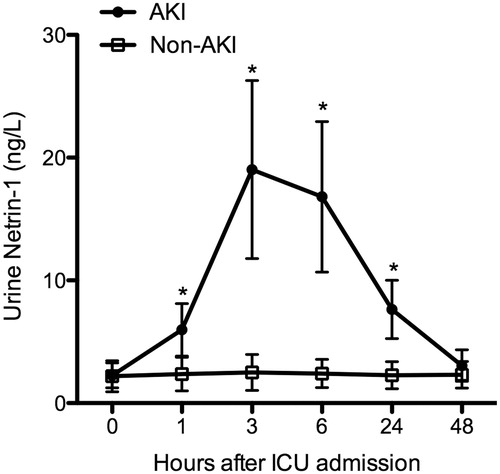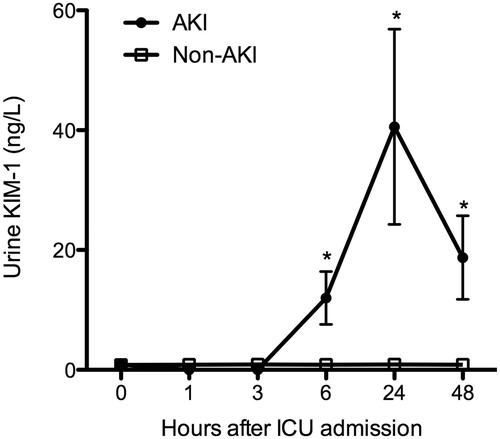Figures & data
Table 1. Subjects’ characteristics.
Figure 1. Changes of serum creatinine (SCr) levels at various time points after ICU admission in septic AKI and non-AKI patients. Two-way ANOVA followed by Bonferroni post hoc test was used here. Note: *p < 0.05.

Figure 2. Changes of urinary netrin-1 levels at various time points after ICU admission in septic AKI and non-AKI patients. Two-way ANOVA followed by Bonferroni post hoc test was used here. Note: *p < 0.05.

Figure 3. Changes of human kidney injury molecule type 1 (KIM-1) levels at various time points after ICU admission in septic AKI and non-AKI patients. Two-way ANOVA followed by Bonferroni post hoc test was used here. Note: *p < 0.05.

Table 2. Comparative diagnostic performance characteristics of netrin-1 and KIM-1 for the septic AKI using the area under the curve.
Table 3. SCr, urinary netrin-1 and KIM-1 levels between non-survivors and survivors.
